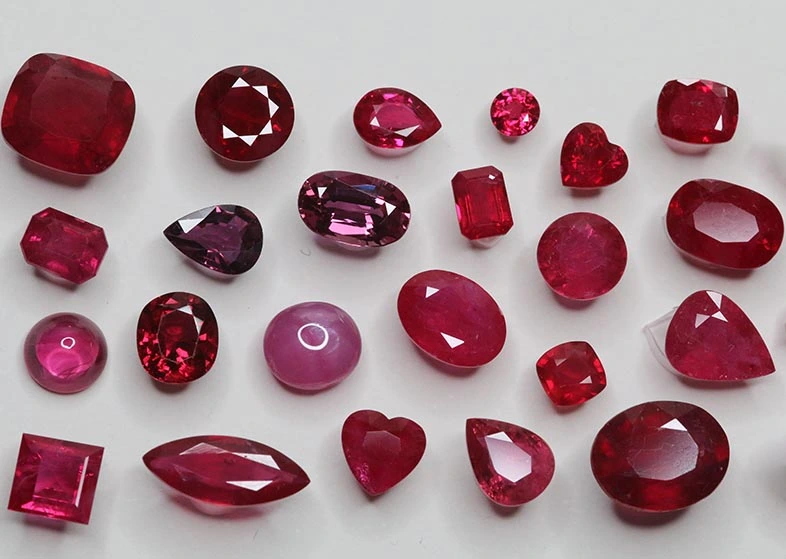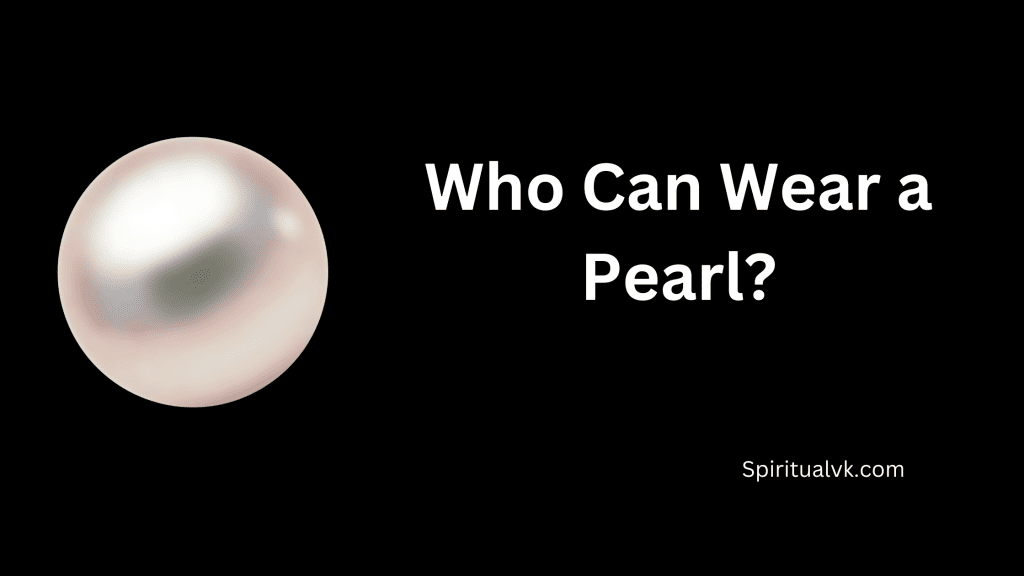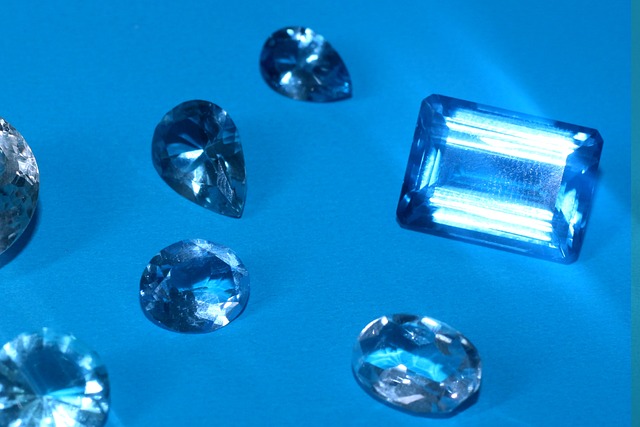Ruby, the vibrant red gemstone, has been cherished for centuries for its beauty, rarity, and symbolic significance. Known as the “King of Gems,” the ruby has adorned the crowns of royalty, featured in numerous cultural traditions, and played a crucial role in various metaphysical and astrological practices. However, like any powerful gem, the ruby is not universally suitable for everyone. Understanding who can wear a ruby gemstone involves exploring its astrological significance, physical properties, health benefits, and cultural connotations.

Astrological Significance
In Vedic astrology, ruby, or “Manikya,” is associated with the Sun, the most powerful celestial body in our solar system. The Sun symbolizes authority, vitality, and the soul, and its influence can significantly impact an individual’s life. Wearing a ruby can enhance the positive effects of the Sun in one’s horoscope, promoting leadership qualities, self-confidence, and overall success.
Who Should Wear Ruby According to Astrology?
- Sun’s Placement in Horoscope: Individuals with a favorable Sun placement in their natal chart are prime candidates for wearing a ruby. It can help amplify the beneficial aspects, such as career advancement, recognition, and improved health.
- Ascendants and Zodiac Signs: Ruby is especially beneficial for individuals with Leo ascendant (Simha Lagna) or those born under the Leo zodiac sign, as the Sun is the ruling planet of Leo. It can also be favorable for Aries (Mesh Rashi) and Sagittarius (Dhanu Rashi) signs, as the Sun shares a friendly relationship with Mars and Jupiter, the ruling planets of these signs.
- Weak or Malefic Sun: People experiencing a weak or malefic Sun in their horoscope, indicated by issues like lack of confidence, health problems, or professional setbacks, may benefit from wearing a ruby. The gemstone can help mitigate these negative effects and restore balance.
Who Should Avoid Wearing Ruby?
- Enemy Planets: According to Vedic astrology, planets like Saturn, Venus, and Rahu are considered enemies of the Sun. Therefore, individuals with a prominent influence of these planets in their horoscope should avoid wearing a ruby, as it may exacerbate challenges related to these planets.
- Sensitive Zodiac Signs: Ruby might not be suitable for individuals with Taurus (Vrishabha Rashi), Libra (Tula Rashi), and Capricorn (Makara Rashi) ascendants or zodiac signs, as the Sun’s energy could conflict with their ruling planets, causing discomfort or adverse effects.
Physical Properties and Benefits
The ruby is a variety of the mineral corundum, and its red color comes from traces of chromium. Its hardness, second only to diamond, makes it a durable gemstone suitable for daily wear. Beyond its physical attributes, ruby is believed to offer several health benefits.
Health Benefits
- Circulatory System: Ruby is thought to improve blood circulation, promoting heart health and vitality. It can help in detoxifying the blood and enhancing overall energy levels.
- Mental Clarity: The gemstone is said to stimulate the mind, improving concentration, motivation, and mental clarity. It can be beneficial for individuals involved in intellectually demanding tasks or creative pursuits.
- Emotional Well-being: Wearing a ruby is believed to reduce anxiety, promote a positive outlook, and enhance emotional strength. It can be particularly helpful for those dealing with stress, depression, or emotional turmoil.

Cultural and Historical Significance
Ruby has held a prominent place in various cultures and traditions throughout history. Its rich red hue symbolizes power, passion, and protection, making it a sought-after gemstone for both adornment and spiritual purposes.
Cultural Significance
- Royalty and Nobility: Throughout history, rubies have been favored by royalty and nobility. They have adorned crowns, scepters, and jewelry, symbolizing wealth, power, and divine favor. In ancient Burma (Myanmar), warriors believed that inserting rubies into their skin made them invincible in battle.
- Religious and Spiritual Practices: In Hinduism, rubies are considered the “gem of the Sun” and are often used in rituals to invoke the Sun’s blessings. In Christianity, rubies have been associated with the virtues of charity and passion, and they have adorned various religious artifacts.
Historical Significance
- Ancient Civilizations: Rubies were highly prized in ancient civilizations, including those of India, China, and Greece. The ancient Hindus referred to rubies as “Ratnaraj,” meaning “king of precious stones,” and believed they could protect their owners from danger and misfortune.
- Trade and Exploration: The quest for rubies has driven trade and exploration for centuries. Myanmar (formerly Burma) has been a major source of rubies for over a millennium. The famous Silk Road facilitated the trade of rubies and other precious gems between Asia and Europe, enhancing their mystique and value.
Modern Considerations
In contemporary times, the decision to wear a ruby often involves a combination of personal preference, astrological advice, and health considerations. Here are some modern guidelines for those considering wearing a ruby gemstone.
Personal Preference
- Aesthetic Appeal: The deep red color of ruby is universally admired for its beauty and elegance. Individuals drawn to the gemstone for its aesthetic appeal can wear it in various forms of jewelry, such as rings, pendants, and bracelets.
- Symbolic Significance: Many people choose to wear ruby for its symbolic meanings, such as love, passion, and strength. It can be a meaningful gift for significant occasions like anniversaries, birthdays, and engagements.
Astrological Consultation
- Professional Guidance: Consulting with a knowledgeable astrologer can provide personalized advice on whether ruby is suitable based on one’s birth chart and planetary influences. This can help avoid potential adverse effects and maximize the gemstone’s benefits.
- Quality and Authenticity: Ensuring the quality and authenticity of the ruby is crucial. Natural, untreated rubies are considered more potent and valuable than synthetic or treated ones. Consulting a reputable jeweler or gemologist can help in making an informed purchase.
Health and Wellness
- Holistic Practices: Ruby can be incorporated into holistic practices, such as crystal healing and meditation. Placing the gemstone on specific chakras or wearing it during meditation can enhance its healing properties.
- Physical Compatibility: Individuals should be mindful of any skin sensitivities or allergies when wearing ruby jewelry. Opting for settings made of hypoallergenic materials can prevent discomfort or irritation.
Conclusion
Ruby, the illustrious red gemstone, offers a blend of beauty, symbolism, and potential benefits that have captivated humanity for centuries. However, determining who can wear a ruby gemstone involves careful consideration of astrological factors, physical properties, health benefits, and personal preferences.
For those whose ruby is astrologically favorable, it can enhance confidence, vitality, and success. Meanwhile, its aesthetic appeal and symbolic significance make it a cherished gemstone in various cultures and traditions.
In the end, whether one chooses to wear a ruby for its astrological benefits, health properties, or sheer beauty, it is essential to ensure its quality and authenticity. Consulting with professionals, both astrologers and gemologists, can provide valuable guidance in making an informed decision. With the right approach, wearing a ruby can indeed be a source of strength, protection, and inspiration in one’s life.


